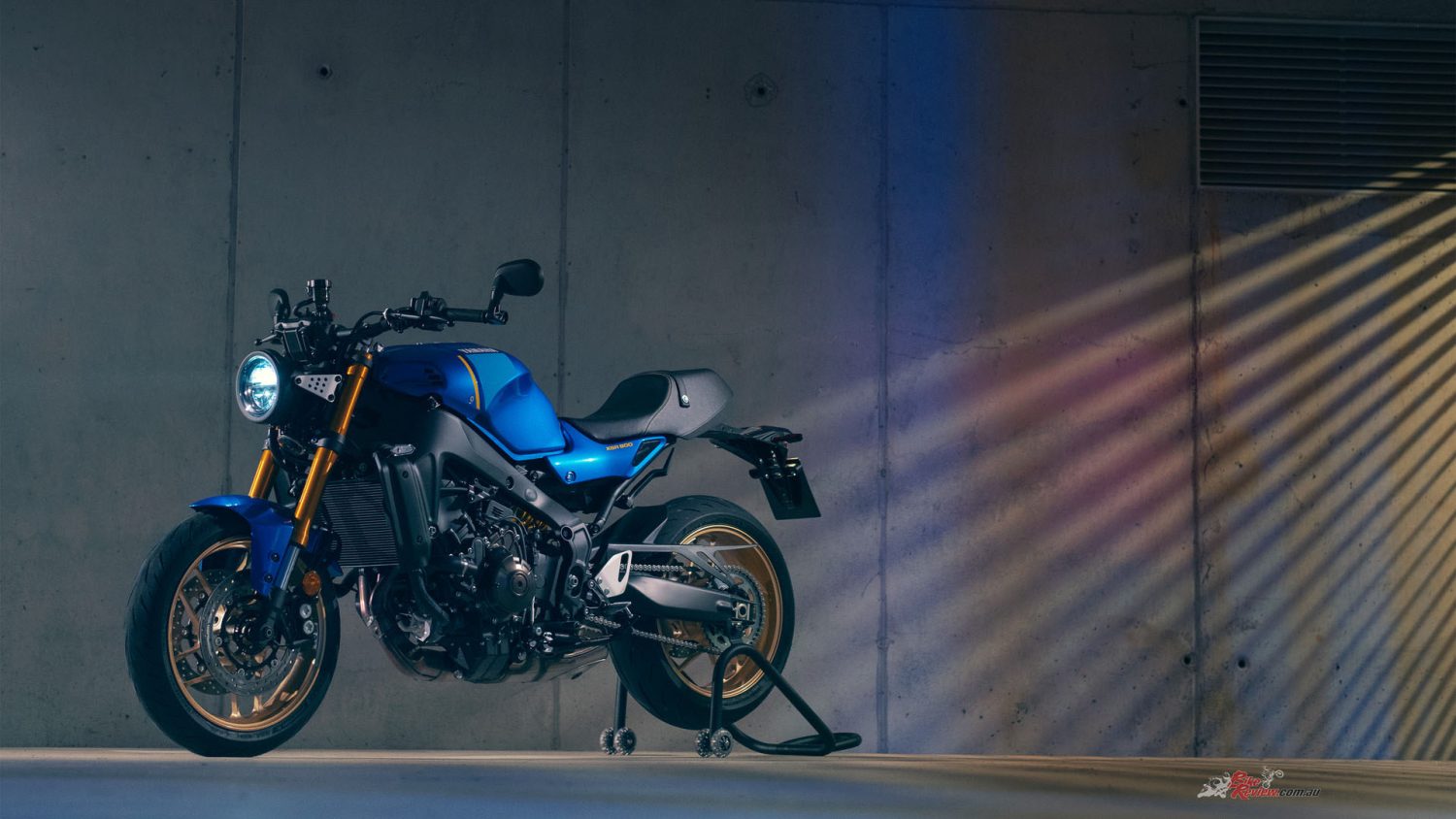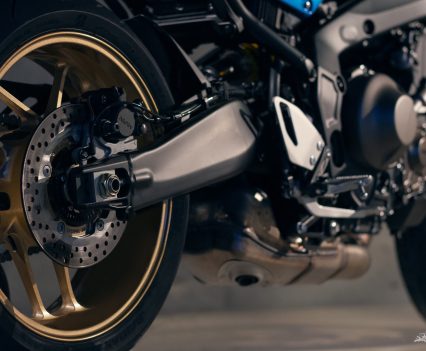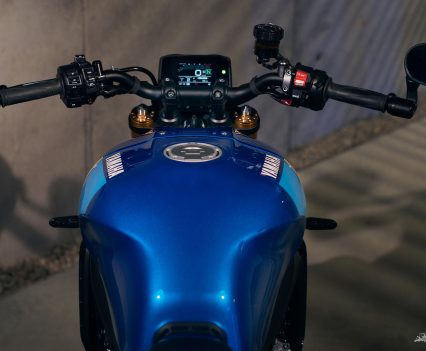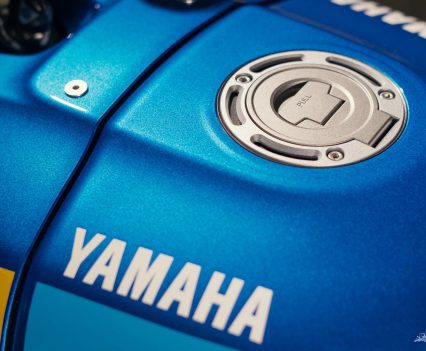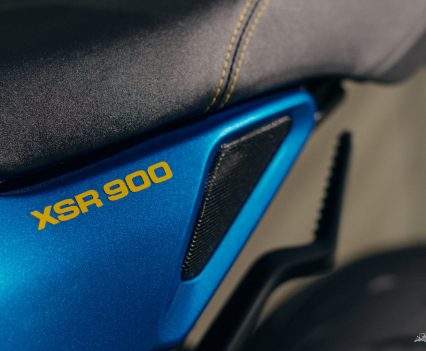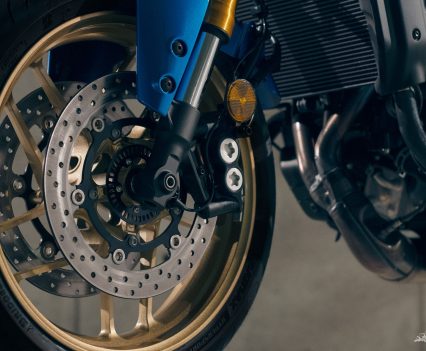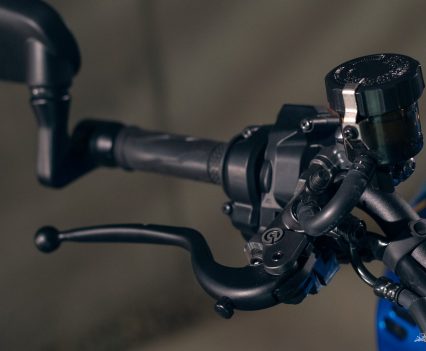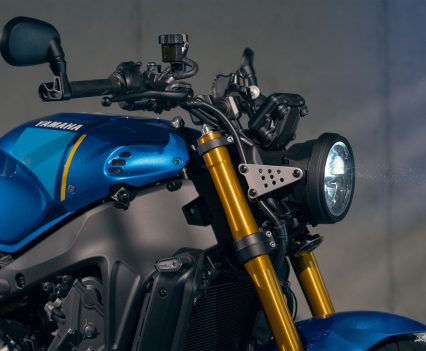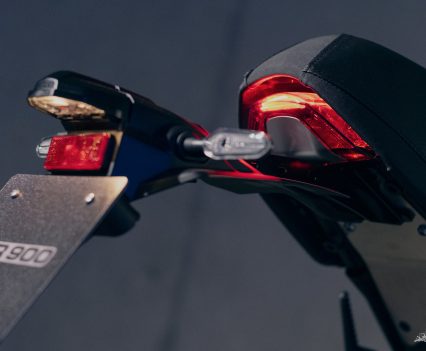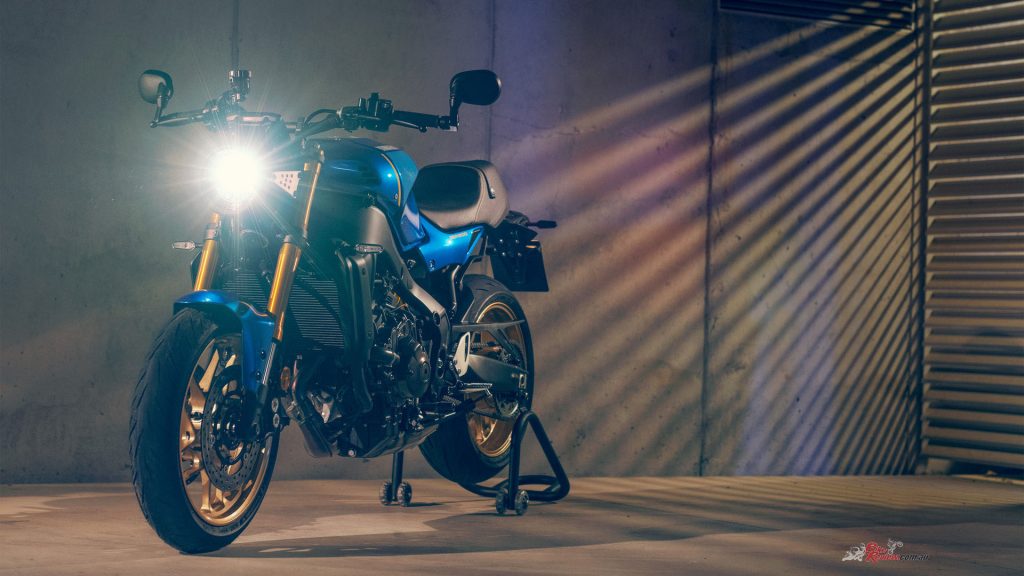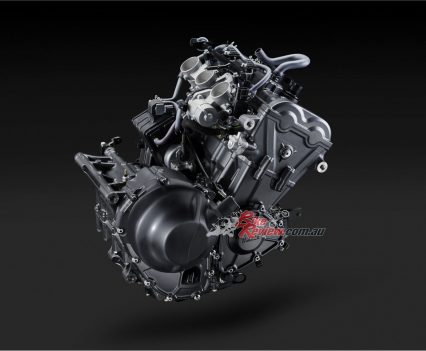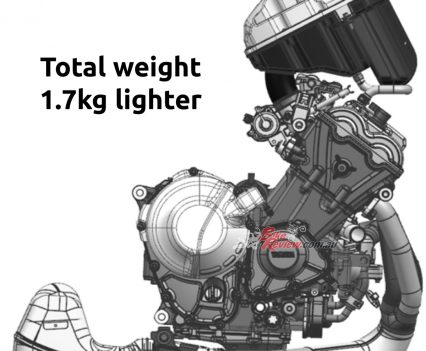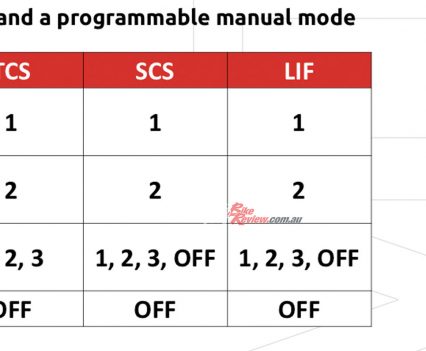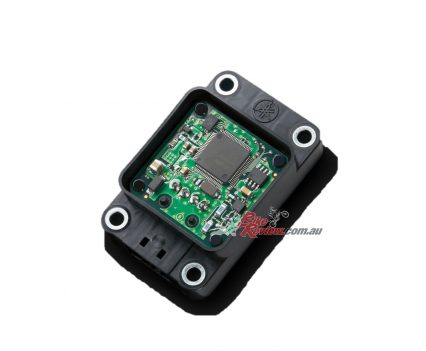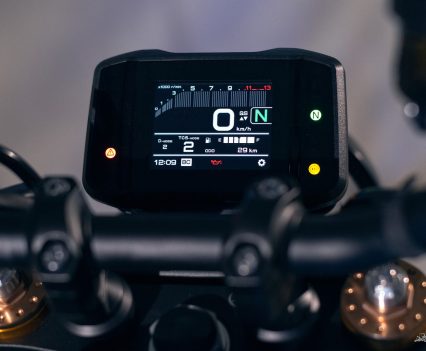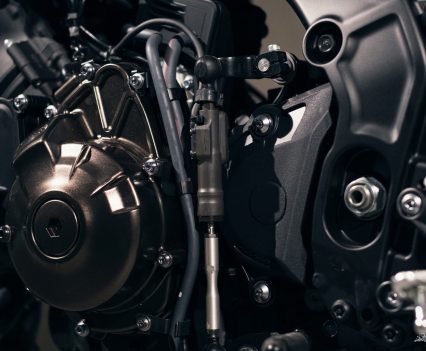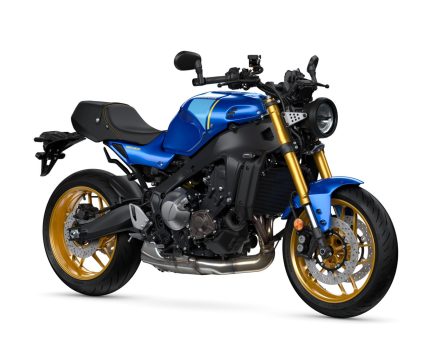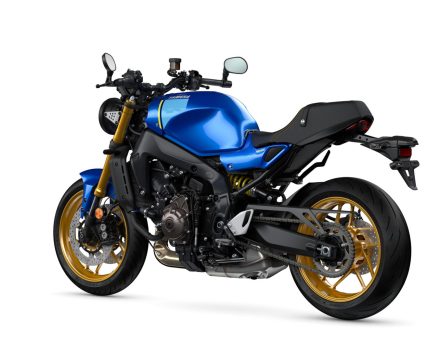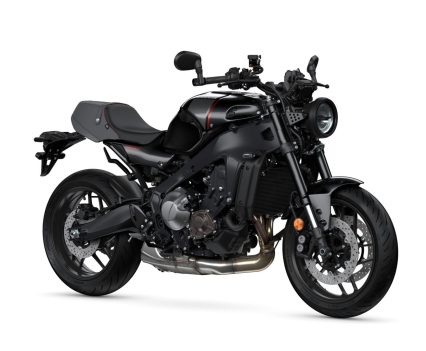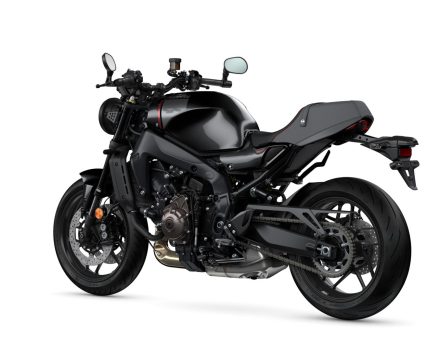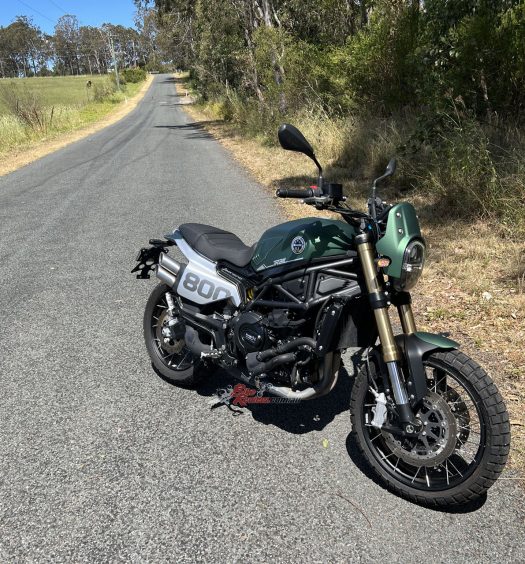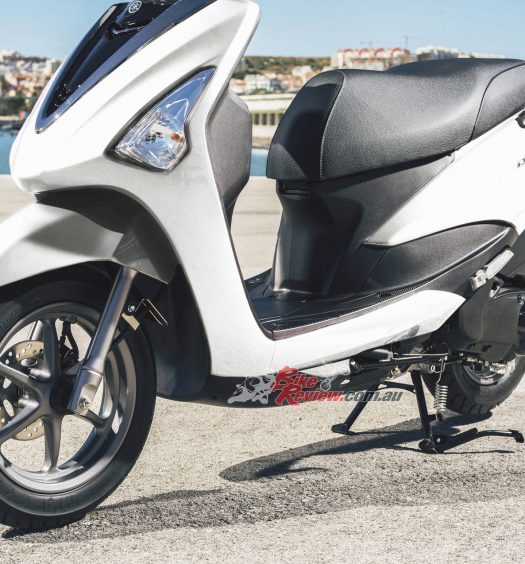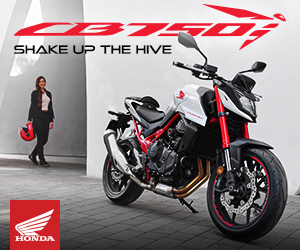Yamaha have recently updated their popular retro-styled XSR900. The 2022 features most of the updates the 2021 MT-09 received with a new powerplant, assists system and more... Press Release: Yamaha
Yamaha say XSRs are not merely a revival of an ancestor or simply vintage-inspired. Each model pays tribute to an iconic motorcycle and design from their rich history, while offering performance minded riders the very latest engine and chassis technology…
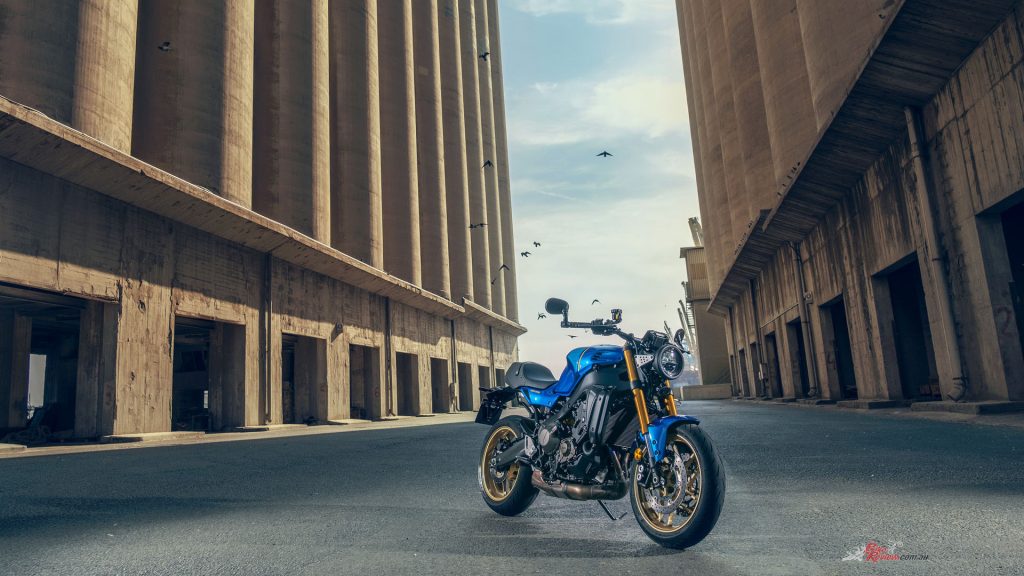
The 2022 XSR900 has received the same treatment that the MT-09 received in early 2021 with a whole new powerplant and assists system…
Check out our 2021 MT-09 review here…
40 years ago Yamaha was the first manufacturer to move away from the conventional tubular frame and develop what was then a controversial Deltabox design. With many wins to its credit, the Deltabox frame design proved its superiority beyond doubt. The new XSR900 now features a radically improved Deltabox chassis.
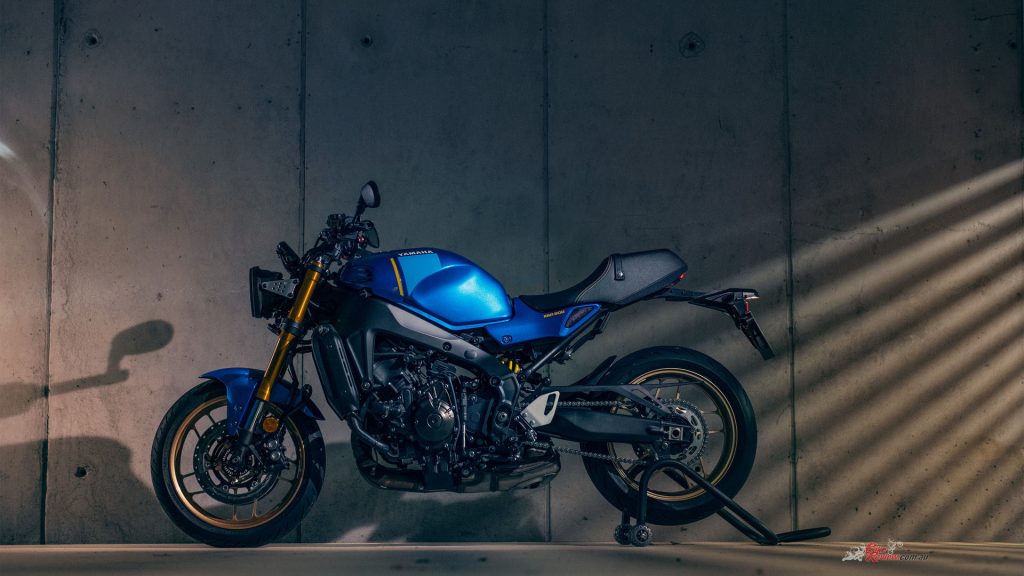
“Longitudinal, lateral and torsional rigidity are all significantly increased, resulting in better straight line stability together without affecting agility.”
Longitudinal, lateral and torsional rigidity are all significantly increased, resulting in better straight line stability together without affecting agility. The head pipe is located 30mm lower than the previous model for increased feeling when cornering. This allows the handlebars to be mounted lower to give the XSR900 a more aggressive stance. Combined with other changes to the chassis there is a 14 per cent reduction in inertia around the steering axis compared to the previous model – enabling the rider to corner quickly, accurately and confidently.
Straight line stability is also enhanced by the fitment of a box-section aluminium swingarm that is 55mm longer than the previous model – and an all-new model-specific subframe is featured. The swingarm now pivots inside the frame which is a slimmer and more rigid design.
The XSR900’s fuel tank is inspired by Yamaha’s 80s-era Grand Prix road racers, and features air intakes at the front that not only help to enhance the engine efficiency, but also transmit the powerful sound of the intake roar to the rider at higher speeds. The relationship between the sculpted 15-litre fuel tank and humped seat gives a riding position further behind the bike’s midpoint, almost above the rear axle. Compact vented sidepanels give the XSR900 a minimalistic look, and the tank’s race style filler cap underlines the bike’s sporting heritage.
High quality components are evident throughout the XSR900, and the new Brembo radial front master cylinder underlines the bike’s cutting edge specification that backs up its very impressive sporting potential. Featuring a piston that moves parallel to the adjustable brake lever, this system gives accurate feedback from the dual 298mm front discs, and provides an unprecedented amount of stopping power with a high level of controllability.
Attention to detail can be seen in the beautifully made forged brake pedal that controls the 245mm rear disc. Suspension is first class, and features fully adjustable KYB USD front forks with a gold finish that enhances the bike’s appearance. The link-type rear suspension features a forward inclined adjustable KYB shock virtually hidden from sight to give the rear a clean and sleek appearance.
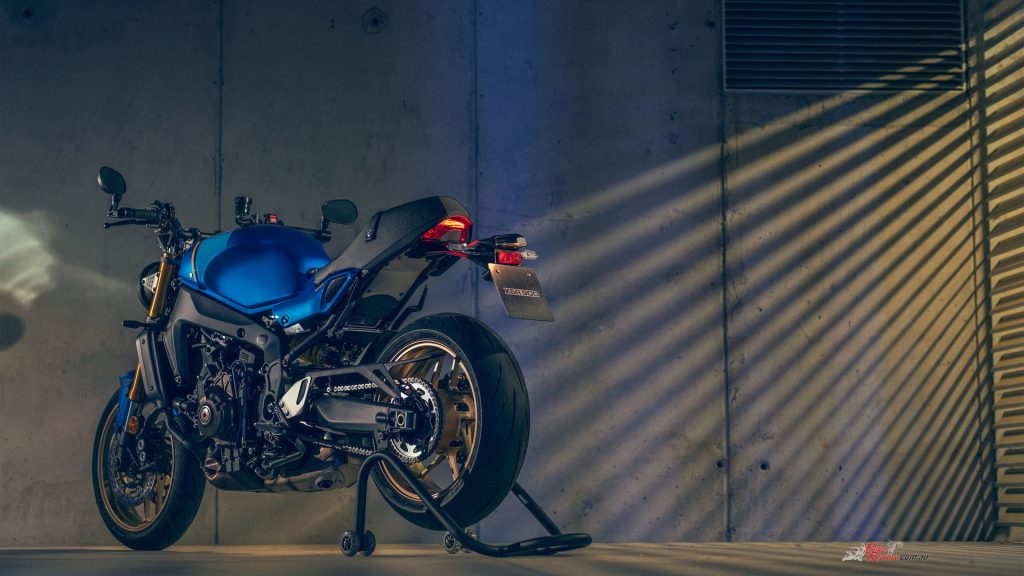
“By manufacturing the new XSR900’s wheels using Yamaha’s exclusive spinforging technology it has been possible to make the front/rear wheel set 700g lighter than before.”
By manufacturing the new XSR900’s wheels using Yamaha’s exclusive spinforging technology it has been possible to make the front/rear wheel set 700g lighter than before. This is a significant reduction in unsprung weight that gives more responsive suspension action for increased agility and stability. The lighter wheels decrease the moment of inertia at the rear by 11 per cent to make the new XSR900 feel much more responsive, particularly when cornering and braking.
An endearing characteristic of the original XSR900, the round headlight, has been continued but takes it to the next level with full LED functionality. As well as providing a strong beam of light with a wide horizontal beam for excellent cornering vision at night, the new LED unit allows the use of a much shorter housing. To emphasise the historic racing image, the XSR900 comes fitted with a hidden LED taillight located beneath the seat hump. LED flashers underline the elegant and sporty lines of this high performance bike.
The cockpit is enhanced with a machined top triple-clamp, drilled fork caps and an aluminium XSR logo. Other features include an embossed aluminium rear underplate, forged foot controls, black brake reservoirs and bar end mirrors showing that this is a motorcycle that is ready to make an impression – and not just with the rider.
For 2022 the XSR900 is driven by a more powerful, larger capacity 889cc CP3 engine producing stronger, linear torque for outstanding acceleration. Compared to the previous engine, the new unit features a 3mm longer stroke to give an extra 43cc, and virtually all of the major internal components have been redesigned and lightened to make this one of the strongest performers in its class.
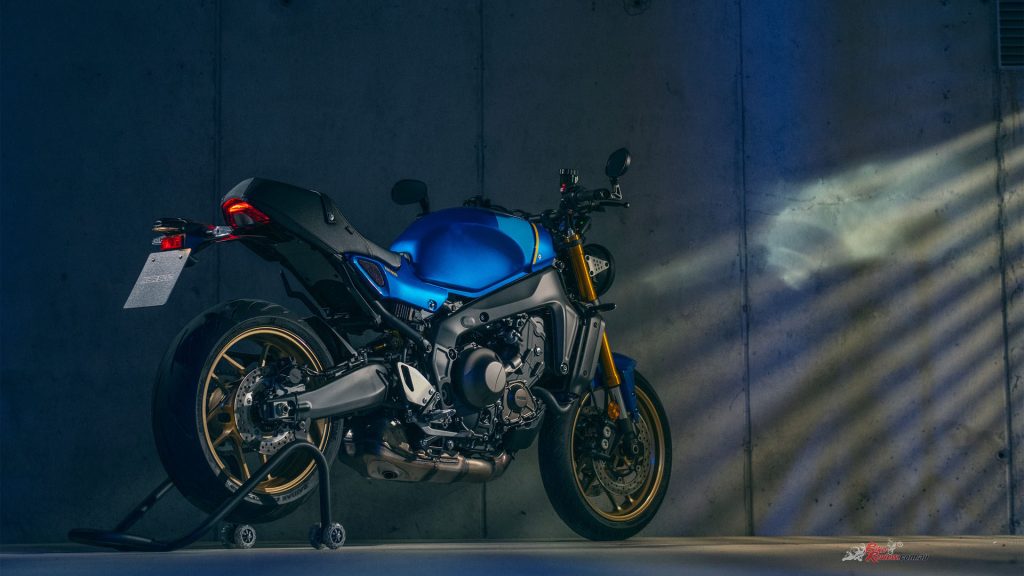
The XSR900’s new exhaust features unequal length headers and dual-sided outlets, and by experimenting with muffler chamber size, the ideal sound was achieved.
Lighter pistons contribute towards the engine’s lower weight (not including the exhaust) – 300g less than previously – and these changes give a 4hp increase in power up to 119hp@10,000rpm. More significantly the torque produced by this engine increases significantly to 93.0Nm. This represents an increase of 6 per cent in torque, and it is achieved at only 7000rpm – a figure that is 1500rpm lower than the previous model.
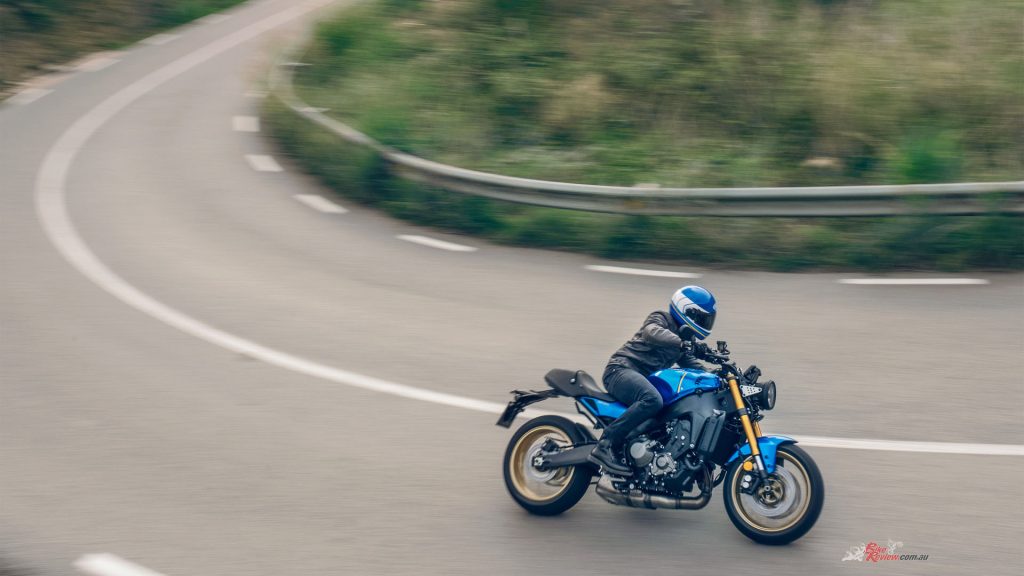
“To handle the XSR900’s markedly increased torque levels the A&S clutch is uprated with different friction plates, and the cam angle of the clutch is changed from 30 degrees to 33 degrees.”
To handle the XSR900’s markedly increased torque levels the A&S clutch is uprated with different friction plates, and the cam angle of the clutch is changed from 30 degrees to 33 degrees. These changes reduce the load on the clutch springs, and so although the engine is delivering more torque at lower engine speeds, the clutch actually feels lighter at the lever. By absorbing back torque the A&S clutch helps to achieve gentler and more stable chassis behaviour during downshifts, giving increased controllability when slowing down. To match the XSR900’s increased power and torque output, the 6-speed transmission has been optimised with slightly higher gear ratios. These changes are designed to complement the new engine changes.
At the heart of XSR900’s new system is a 6-axis Inertial Measurement Unit (IMU) that uses two sensors to measure three-axis velocity and three-axis acceleration. This new unit is 50 per cent smaller and 40 per cent lighter than the original 2015 R1 design, and it sends data to the ECU that informs the following three rider aids. The degree of intervention of the Traction Control System is calculated by the IMU relative to the degree of lean, and the rider can select one of three intervention modes or even turn the system off completely.
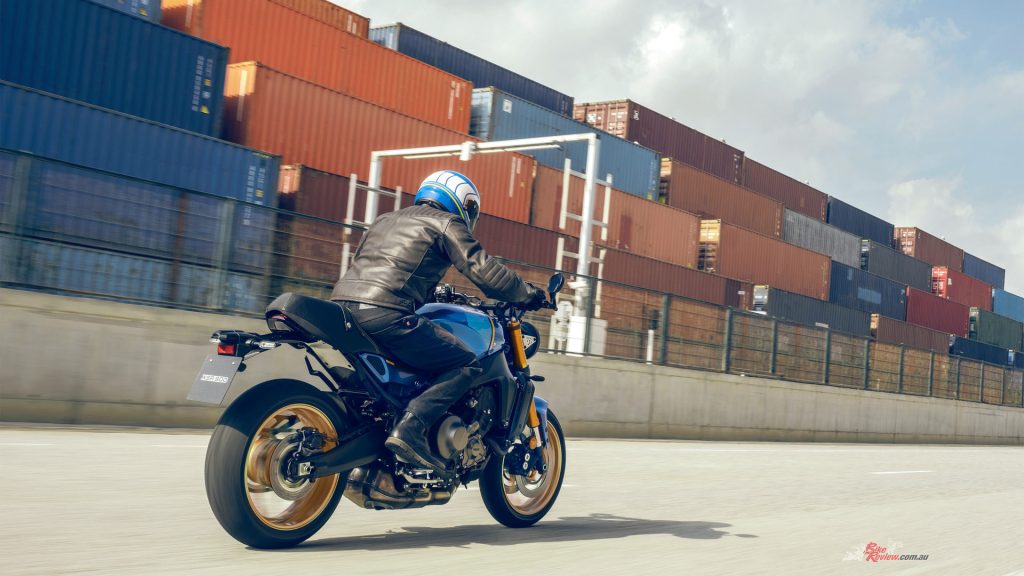
Assists can be changed to suit the riders preference and road conditions through the6-axis Inertial Measurement Unit!
When a sideways rear wheel slide is predicted by the IMU the drive power is adjusted in order to maintain traction. As with TCS there are three intervention levels, as well as an off switch. LIF is an anti-wheelie system that helps to smooth out machine behaviour when pulling away or accelerating hard, LIF is designed to work in harmony with the other electronic control systems.
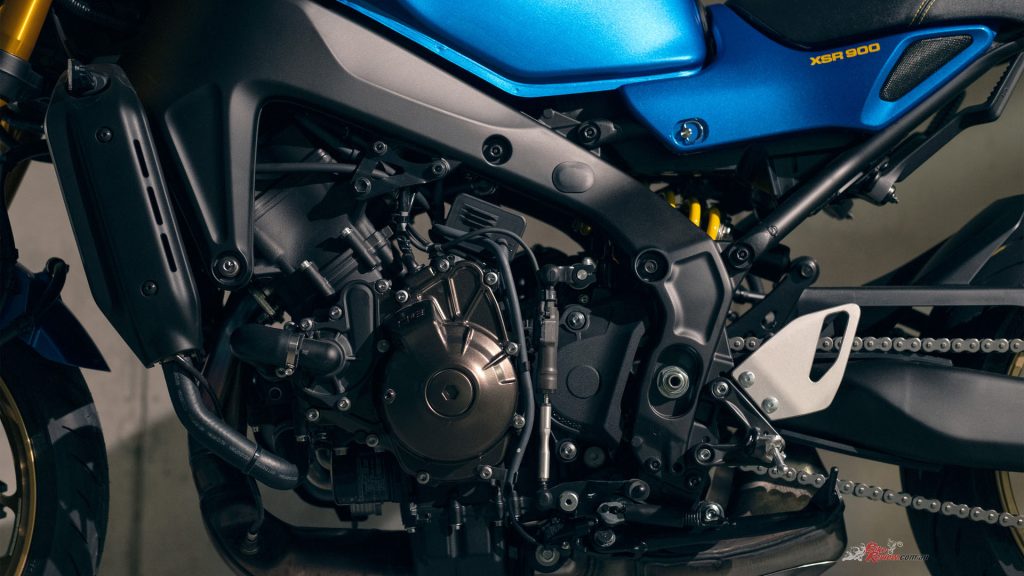
The XSR900’s Quick Shifter System (QSS) takes the performance to another level by allowing the rider to do clutchless full throttle upshifts for optimum acceleration.
The XSR900’s Brake Control system independently controls and moderates the front and rear brake pressure to prevent accidental wheel lock ups. BC1 is a standard type of ABS mode that activates in upright emergency stopping situations, while BC2 is designed to maintain control if emergency braking is applied when the XSR900 is leaning in mid corner.
The new XSR900 features four D-Mode engine power modes, compared to three on the previous model. Mode 1 is the most aggressive full-power mode, while modes 2, 3 and 4 deliver progressively softer degrees of response to suit riding conditions. The new model takes fly-by-wire tech one step further with the addition of an R1-type Acceleration Position Sensor Grip (APSG). A sensor in the twist grip replicates the traditional feeling of the throttle spring, and eliminates the need for any cables.
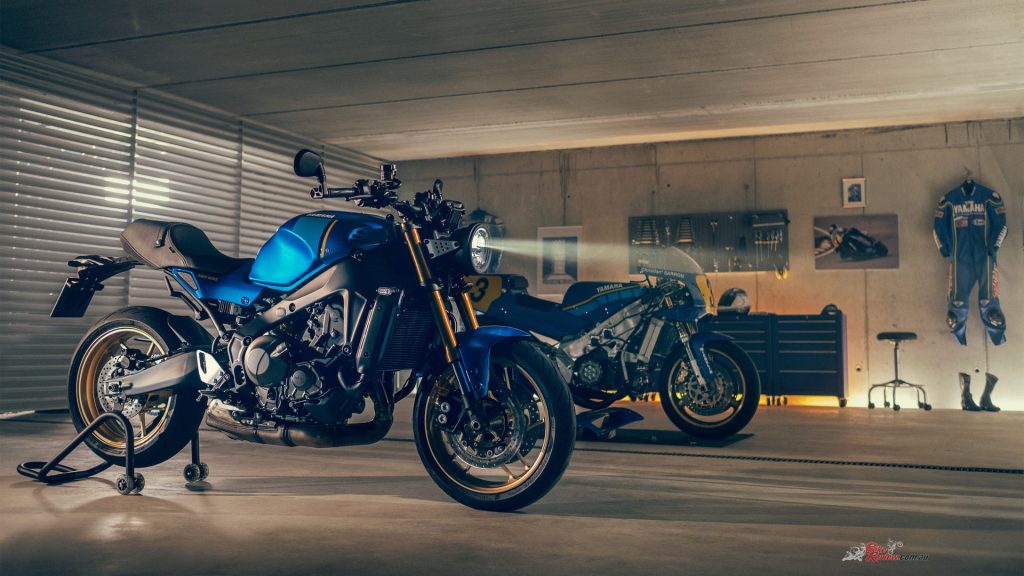
Despite the XSR’s retro styling, it has been decked out with everything from a TFT dash to cruise control!
Another new feature seen for the first time on the XSR900 is Cruise Control, this easily programmable system makes longer journeys even more enjoyable. The new XSR900 is presented in a modern day interpretation of the distinctive colours of GP-winner Christian Sarron. Christian helped underline the success of the Deltabox by delivering great performances throughout the 1980s. These achievements still resonate within Yamaha and inspire the brand to perform better every day. That Legend Blue colour scheme goes with a curvaceous 15-litre steel fuel tank and raw seat-hump design to seamlessly blend the roadster image with racer details.
The distinctive gap between the tank and seat, quick release fasteners and hidden passenger foot pegs combine to produce the unique looks of the XSR900. A second colour of Midnight Black is also offered with red highlights and black forks.
2022 Yamaha XSR900 Specifications
Price: TBA
Claimed Power: 87.5kW@10,000rpm
Claimed Torque: 93Nm@7000rpm
Kerb Weight: 193kg
Fuel capacity: 14L
Engine: Liquid-cooled, four-stroke, DOHC, Cross plane triple, 78.0mm x 62.1mm bore x stroke, 889cc, 11.5:1 compression, three-into-one exhaust Gearbox: Six speed Clutch: A&S Wet, multiple disc
Chassis: Aluminium Deltabox frame
Front Suspension: Telescopic fork adjustable for preload, rebound and compression 130mm of travel (f) Linked monoshock adjustable for preload and rebound 137mm (r)
Brakes: Twin 298mm discs with four-piston calipers, Brembo master-cylinder, cornering ABS(f), Single 245mm disc with single-piston caliper, cornering ABS (r)
Wheels & Tyres: 10-spoke spinforged aluminium wheels, 120/70 – 17 and 180/55 – 17
Dimensions
Seat height: 810mm
Ground clearance: 140mm
Overall width: 860mm
Overall Length: 2155mm
Overall height: 1115mm
Instruments: Full-colour TFT dash


